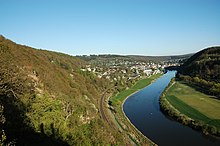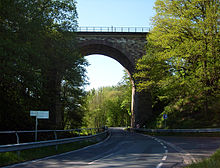Solling Railway
| Höxter-Ottbergen-Northeim (Han) | |||||||||||||||||||||||||||||||||||||||||||||||||||||||||||||||||||||||||||||||||||||||||||||||||||||||||||||||||||||||||||||||||||||||||||||||||||||||||||||||||||||||||||||||||||||||||||||||||||||||||||||||||||||||||||||||||||||
|---|---|---|---|---|---|---|---|---|---|---|---|---|---|---|---|---|---|---|---|---|---|---|---|---|---|---|---|---|---|---|---|---|---|---|---|---|---|---|---|---|---|---|---|---|---|---|---|---|---|---|---|---|---|---|---|---|---|---|---|---|---|---|---|---|---|---|---|---|---|---|---|---|---|---|---|---|---|---|---|---|---|---|---|---|---|---|---|---|---|---|---|---|---|---|---|---|---|---|---|---|---|---|---|---|---|---|---|---|---|---|---|---|---|---|---|---|---|---|---|---|---|---|---|---|---|---|---|---|---|---|---|---|---|---|---|---|---|---|---|---|---|---|---|---|---|---|---|---|---|---|---|---|---|---|---|---|---|---|---|---|---|---|---|---|---|---|---|---|---|---|---|---|---|---|---|---|---|---|---|---|---|---|---|---|---|---|---|---|---|---|---|---|---|---|---|---|---|---|---|---|---|---|---|---|---|---|---|---|---|---|---|---|---|---|---|---|---|---|---|---|---|---|---|---|---|---|---|---|---|
| Route number : | 2975 | ||||||||||||||||||||||||||||||||||||||||||||||||||||||||||||||||||||||||||||||||||||||||||||||||||||||||||||||||||||||||||||||||||||||||||||||||||||||||||||||||||||||||||||||||||||||||||||||||||||||||||||||||||||||||||||||||||||
| Course book section (DB) : | Ottbergen – Bodenfelde: 356.1 (2015) Bodenfelde – Northeim: 356.2 (since 2015) ; (before: 356 north) |
||||||||||||||||||||||||||||||||||||||||||||||||||||||||||||||||||||||||||||||||||||||||||||||||||||||||||||||||||||||||||||||||||||||||||||||||||||||||||||||||||||||||||||||||||||||||||||||||||||||||||||||||||||||||||||||||||||
| Route length: | 63.95 km | ||||||||||||||||||||||||||||||||||||||||||||||||||||||||||||||||||||||||||||||||||||||||||||||||||||||||||||||||||||||||||||||||||||||||||||||||||||||||||||||||||||||||||||||||||||||||||||||||||||||||||||||||||||||||||||||||||||
| Gauge : | 1435 mm ( standard gauge ) | ||||||||||||||||||||||||||||||||||||||||||||||||||||||||||||||||||||||||||||||||||||||||||||||||||||||||||||||||||||||||||||||||||||||||||||||||||||||||||||||||||||||||||||||||||||||||||||||||||||||||||||||||||||||||||||||||||||
| Dual track : | (formerly continuous) | ||||||||||||||||||||||||||||||||||||||||||||||||||||||||||||||||||||||||||||||||||||||||||||||||||||||||||||||||||||||||||||||||||||||||||||||||||||||||||||||||||||||||||||||||||||||||||||||||||||||||||||||||||||||||||||||||||||
|
|||||||||||||||||||||||||||||||||||||||||||||||||||||||||||||||||||||||||||||||||||||||||||||||||||||||||||||||||||||||||||||||||||||||||||||||||||||||||||||||||||||||||||||||||||||||||||||||||||||||||||||||||||||||||||||||||||||
The Solling Railway , also known as the Höxter-Ottbergen – Northeim railway line , is a non-electrified, single-track main line in North Rhine-Westphalia and Lower Saxony . It leads through the southern Solling from Höxter-Ottbergen to Northeim .
Route


The route begins in the North Rhine-Westphalian district of Höxter , more precisely in Ottbergen at Weiche 61 with an initial kilometer of -0.394 and runs on a high dam with a bridge over the Nethe to Amelunxen . This is followed by a deep incision as far as the Beverungen-Wehrden stop , behind which the Weser is crossed on a steel bridge and with which the Lower Saxony area of the Holzminden district is reached. The Weser is now followed upriver, with the route after the Lauenförde - Beverungen stop and back to behind Würgassen over the area of the Höxter district. After Würgassen it leads picturesquely between the Weser and the " Hanoverian Cliffs " to the North Rhine-Westphalian- Hessian state border on the eastern outskirts of Bad Karlshafen , the northernmost town of Hesse, which is in the Kassel district (until the state border was relocated, the railway even ran briefly between Würgassen and Bad Karlshafen again over Lower Saxony, from the district of Northeim ). There is a stop in Bad Karlshafen. Shortly thereafter, the Northeim district is finally reached. The Wahmbeck tunnel cuts off a loop of the Weser.
Behind Bodenfelde , the route finally leaves the Weser valley and then crosses the Schwülmetal . The Solling Railway and the Göttingen – Bodenfelde railway line run parallel between Bodenfelde and Vernawahlshausen , and the state border is crossed three times (the Schwülme is crossed twice in Hesse, after the state border has been crossed for the first time). Until 1976 you could change between the routes in Vernawahlshausen in Hesse, since then only the Göttingen trains stop. From there it runs through the district of Northeim to the end of the route. At Gut Steimke in front of Uslar, it crosses the Ahle brook on a high viaduct . At Uslar-Allershausen to behind Uslar-Bollensen the route runs again on a high dam. The Solling web rises above Uslar and Volpriehausen in southern slope of Rehbachtals to Ertinghäuser (Bollert-) tunnel as the highest point of the route (259 m above sea level. NN) with slopes of up to 11.4 ‰ , and then falls over Hardegsen with a Gradients of up to 12.7 ‰ into the Leinetal . Another deep incision is made at Hardegsen. After Berwartshausen, the Sollingbahn is crossed by the federal motorway 7 Hanover – Kassel. Before Northeim it runs on a dam and crosses the river Leine , the high-speed line Hanover – Würzburg and the north-south line ( Hannöversche Südbahn ). In Northeim it ends at km 63.951.
Branches and track connections
Track connections (Awanst)
- Lauenförde: Herlag company (wood furniture factory); No longer on the rail network since renovation in 2007.
The dismantling is due to the future central switching in Göttingen. Since 2007 Lauenfoerde has only a passing track , all other tracks were dismantled.
- Würgassen: Würgassen nuclear power plant
- Bodenfelde: Degussa ( charcoal factory). Dismantled from the station since 2003. The route was dismantled in 2007.
The route was also important for the former Uslar furniture industry , the Volpriehäuser potash and lignite industries, the cement works and the purchasing and sales cooperative in Hardegsen, as well as the grain houses in Uslar, Moringen and Northeim, which handled freight traffic on this route.
Former branches
The former main route Holzminden-Scherfede was crossed at Beverungen-Wehrden . Both routes ran parallel in Wehrden station, where a change was possible.
After the Second World War, there was also a 1.1 km long connecting railway to the aforementioned route, creating an alternative route between Ottbergen and Holzminden via the Wildberg junction near Amelunxen and the Steinberg junction. Already during the war, fearing the German military that the three rail bridges in Hoxter , Furstenberg (Weser) and Wehrden ( Meinbrexen ) targets of attacks could be, and in autumn 1944 the construction of this connecting track began (as the Prince Brücke of all three the best possible traffic over the Weser), which however could not be completed. These bridges were blown up by German troops when they withdrew on April 7, 1945. On September 1, 1946, for the reasons listed above, the Fürstenberger Bridge was repaired by British pioneers for double-track operation and the connecting line was also completed at the same time. Since the route was essentially a large curve , it was called the “English curve ”. The shutdown took place on December 11, 1964, and it followed the dismantling of the connecting line. The Weser bridges at Höxter and Wehrden were not repaired until December 13, 1948. In the case of the Solling Railway, however, this only happened on a single track, it was repaired several times in the period that followed.
In Bad Karlshafen there was a second train station on the left bank of the Weser . This was the end point of the Carlsbahn from Hümme and not connected to the Sollingbahn. The station on the Sollingbahn was therefore called "Karlshafen rU" ("rU" for "right bank "), while the Carlsbahn station was called "Karlshafen lU" (for "left bank").
In Uslar the line branched off to Schönhagen (1921 / 1927–1989 / 1990).
history
Construction by the Prussian State Railways began on November 11, 1873, the highest point in the Ertinghausen tunnel was pierced on September 6, 1876, and the official opening took place on January 15, 1878. In 1886 the line was expanded to two tracks. This railway was a very important route in the rail network of the German Empire , as it was a section of the railway connection between the industrial region of Halle - Leipzig and the Ruhr area . Due to the construction of the railway line and the connection it created with the eastern and western industrial centers of Germany, an exemplary economic boom took place in the previously remote region , the “poor house of Hanover ”, during the imperial era . Together with the Altenbeken – Ottbergen – Kreiensen railway line to the west and the southern Harz line to the east , it rose from the 1930s to 1945 to become one of the most heavily used east-west routes for freight traffic. During the Second World War, more than 100 freight trains traveled the route every day.
The division of Germany significantly reduced its importance, although it was still possible to transport goods through Walkenried to the GDR . The through freight traffic was stopped in 1989. Continuous connections with express trains ( Oberhausen - Walkenried, Bielefeld - Odertal and Cologne - Halle ) existed until the 1980s and in the first years after the fall of the Wall .
After reunification , east-west traffic was concentrated on the routes via Hanover and Kassel , so that this route has only been of regional importance since then. At the beginning of 1990, the line was dismantled again on one track . Since then, train crossings have only been possible in Lauenförde , Bodenfelde, Uslar and Hardegsen.
In the years after the turn of the millennium , it was threatened with complete closure several times , although in 2002 goods traffic was resumed on a small scale at short notice. In the meantime, the railway line has been connected to an electronic signal box in Göttingen in order to enable operation with a low staffing requirement. According to the regional transport company , no more cancellations of local transport are to be expected in Lower Saxony.
Current offer
Since December 15, 2013 the Solling Railway has been served by two different railway companies. The Ottbergen – Bodenfelde section is served every 60 minutes on weekdays (every two hours on Sundays) by the NordWestBahn , which connects its trains from Bodenfelde via the railway to Göttingen . This connection is also called the Oberweserbahn . Since December 2015, trains from Göttingen and Northeim – Bad Karlshafen have been connected to those from Kreiensen / Holzminden at Höxter-Ottbergen station . This means that passengers from the direction of Göttingen can travel to Paderborn without having to change trains. To implement the wing train concept, the Höxter-Ottbergen station had to be converted accordingly, which began in September 2014. Before the NordWestBahn started operating, the RB 85 Ottbergen – Göttingen was served every two hours by Deutsche Bahn. In Bodenfelde, you had to change trains from Paderborn to Northeim (-Nordhausen). The Bodenfelde – Northeim section is run by DB Regio with regional trains every two hours, with individual trains running for schoolchildren . This connection is tied through in Northeim via the southern Harz line to Nordhausen .
The Westphalian tariff applies to all local public transport between Ottbergen and Bad Karlshafen, and from Lauenförde-Beverungen the Southern Lower Saxony transport association can be used.
future
As part of the investigation of a Kassel freight railway curve, which serves to improve east-west traffic, the route is named as an expansion alternative. The expansion project and the route search started in 2018 and is part of the Federal Transport Infrastructure Plan 2030 under the project title "ABS Paderborn - Halle (curve Mönchehof - Ihringshausen)".
Used locomotives
Until May 29, 1976, this was formerly shape signal and - block provide rich track very interesting for railway enthusiasts, as they had previously been considered one of the last stretches of West Germany of steam locomotives was busy. Due to the relatively steep Solling ramp, the class 44 of the Ottbergen depot was used for the long through freight trains (Dg) (they were moved to the Gelsenkirchen depot in 1976 ). At the time, this replaced the weaker class 58 . The 50 series was also used. From 1976 the class (BR) 44 was replaced by diesel locomotives of the class 212 in combination with the class 216 for national freight traffic. Small locomotives of the series 323 and 332/334 (e.g. between Uslar and Bodenfelde) were used for local freight transport .
Diesel locomotives and accumulator railcars were used for passenger transport much earlier. Here, the series VT 08 , the accumulator multiple units of the series 515 in combination with sidecars of the series 815 (regional passenger traffic until 1989, Braunschweig depot) and the series 216 (supra-regional passenger traffic, for example Aachen –Walkenried) were used. With the fall of the Berlin Wall, the 232 series was also used from 1989/1990 , as was the DR series 228 of the Nordhausen depot , which was used until May 1995 (for example for the connection between Halle and Cologne ). The regional passenger traffic was also served by the series 614 , 628 and 634 .
Today the regional traffic on the Bodenfelde – Northeim section is operated with two-part diesel multiple units of the DB class 648 (Alstom Coradia LINT) . On the Ottbergen – Bodenfelde section, the NordWestBahn is using three-part diesel multiple units of the Bombardier Talent type .
Others
- In 2003, pupils implemented the construction of the Solling Railway as a stage play in the theater project "Eisenfieber".
- Kibri and Vollmer have kit models in H0 format of the Nethetaler Bridge and buildings of the Ottbergen depot, such as the water tower and the Om signal box . There are also self-made, detailed models of the Ottbergen and Uslar stations. There is an exact replica of the Ottbergen station on the model federal railway in Bad Driburg and now Brakel .
- GSM-R has been available since December 10, 2006 .
- At a railway overpass near Moringen over a field path towards Vorwerk Holtensen, scenes from the three-part television series The Gentlemen ask to the cash register , which deals with the largest railway robbery in criminal history , were filmed in 1965 . The now demolished station building in Moringen also served as a filming location.
- A scene for the Jerry Cotton film The Brooklyn Murderer's Club (1966) was filmed at the Papiermühle flyover between Wahmbeck Tunnel and Bodenfelde .
- The Solling Railway was also modeled as a route for the PC train simulators Zusi and Loksim3D .
literature
- Josef Högemann: Railway Altenbeken - Nordhausen. Kenning Verlag, Nordhorn 1994, ISBN 3-927587-35-4 .
- Werner Borchert: The connecting railway at Amelunxen. Commissioned 50 years ago. In: the wait. Home magazine for the Paderborn and Höxter districts. No. 90, 1996, ISSN 0939-8686 , pp. 7-9.
- Ulrich Rockelmann (Ed.): The great archive of the railway lines in Germany. Route 356 (2975) Ottbergen - Northeim. Loose-leaf collection. GeraNova Verlag, Munich 2008, ISSN 1614-9181 .
Web links
- History of the Solling Railway
- Pictures and information about steam locomotive operation in the mid-1970s
- more pictures of the steam locomotive operation in the 1970s
- Images of the tunnel portals
- Historical administrative data
- Route description (as of 1998)
Individual evidence
- ↑ https://www.drehscheibe-online.de/foren/read.php?17,1255932,1255932
- ↑ Symbolic groundbreaking ceremony for the modernization of the train station in Höxter - Ottbergen / investment of almost 4 million euros - commissioning expected in 2016 ( memento from July 10, 2015 in the Internet Archive ) Deutsche Bahn press release on the reconstruction of the Ottbergen train station
- ^ DB AG: ABS Paderborn - Halle - table template . March 20, 2018, p. 63 .
- ↑ Construction project Paderborn - Halle | Section “Kassel curve” | BauInfoPortal of Deutsche Bahn. Retrieved March 27, 2018 .
- ↑ Dossier. Retrieved March 27, 2018 .
- ↑ http://www.uslar.de/staticsite/staticsite.php?menuid=197&topmenu=185&keepmenu=inactive Section "WeserWaldWochen"
- ↑ http://rire-modelle.de/neu/images/stories/pdf/Gebaude%20Katalog%202008.pdf kibri building catalog
- ↑ Jürgen Dumnitz: On this bridge in Bodenfelde, a Jerry Cotton scene was filmed in 1966. Retrieved January 11, 2018 .








